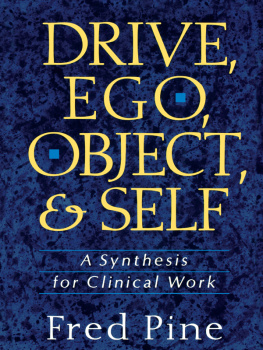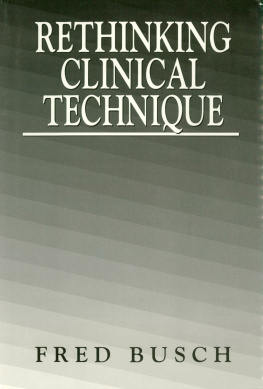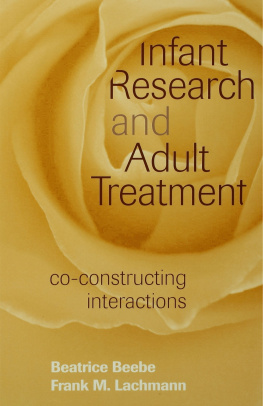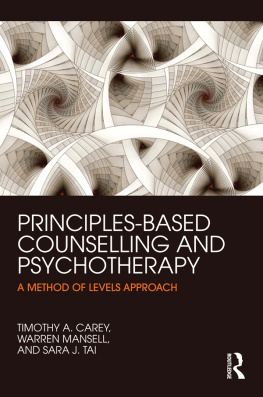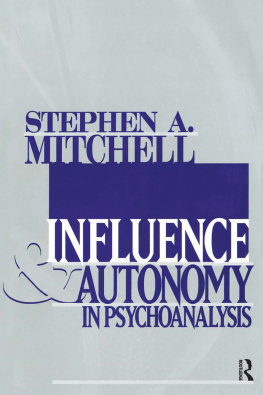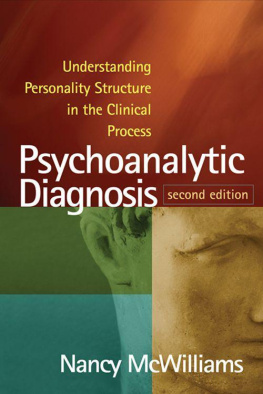DRIVE,
EGO, OBJECT,
AND SELF
A Synthesis for
Clinical Work
FRED PINE

A Member of the Perseus Books Group
Excerpts from: Bornstein, B. (1949). The analysis of a phobic child. Psychoanalytic Study of the Child, 3/4, 181-226. Reprinted with permission of International Universities Press, Inc.
Excerpts from: Fleming, J. (1975). Some observations on object constancy in the psychoanalysis of adults. Journal of the American Psychoanalytic Association, 23, 743-759. Reprinted with permission of International Universities Press, Inc.
Excerpts from: Loewald, H. W. (1971). On motivation and instinct theory. Psychoanalytic Study of the Child, 26. Copyright 1972 by Ruth S. Eissler, Anna Freud, Marianne Kris, and Seymour L. Lustman. Reprinted by permission of Yale University Press.
Excerpts from: Mitchell, S. A. (1984). Object relations theories and the developmental tilt. Contemporary Psychoanalysis, 20, 473-499. Reprinted with permission.
Excerpts from: Pine, F. (1985). Developmental theory and clinical process. Copyright 1985 by Yale University. Reprinted by permission of Yale University Pres.
Excerpts from: Pine F. (1986a). On the development of the borderline-child-to-be. American Journal of Orthopsychiatry, 56, 450-457. Copyright 1986 by the American Journal of Orthopsychiatry. Reprinted with permission.
Excerpts from: Pine, F. (1986b). The symbiotic phase in the light of current infancy research. Bulletin of the Menninger Clinic, 50, 564-569. Reprinted with permission.
Excerpts from: Pine, F. (1988). The four psychologies of psychoanalysis and their place in clinical work. Journal of the American Psychoanalytic Association, 36, 571-596. Reprinted with permission of International Universities Press, Inc.
Excerpts from: Pine, F. (1989). Motivation, personality organization, and the four psychologies of psychoanalysis. Journal of the American Psychoanalytic Association, 37, 27-60. Reprinted with permission of International Universities Press, Inc.
Excerpts from: Segel, N. P. (1981). Narcissism and adaptation to indignity. International Journal of Psychoanalysis, 62, 465-476. Copyright Institute of Psycho-Analysis. Reprinted with permission.
Library of Congress Cataloging-in-Publication Data
Pine, Fred, 1931
Drive, ego, object, and self : a synthesis for clinical work /
Fred Pine.
p. cm.
Includes bibliographical references (p. ).
ISBN 0-465-01722-3
eBook ISBN: 9780786723119
1. Psychoanalysis. I. Title.
RC504.P56 1990
616.8917dc20 89-43168
CIP
Copyright 1990 by Rachael and Daniel Pine
Printed in the United States of America
Designed by Vincent Torre
02 03 04 EB 15 14 13
To Rachael and Daniel
Preface
THE PHENOMENA OF clinical work, as they are conceptualized today, are often seen as falling into four broad domains. We are accustomed to referring to these domains as those of drive, ego, object relations, and self. Our theories ought to fit with these observations and to suggest how things got that way. My aim in this book is to propose a view along those lines.
Whatever original contribution there is herein, it is not intended to be in the groupings of the phenomena themselves, nor in the broad conceptual languages used to describe them. There I shall simply work with our familiar terms: drive, ego, object relations, self. I recognize that these are loose and overlapping groupings, and that the phenomena could be grouped in other ways; but they are familiar, and I am used to rediscovering them continually in clinical work, and so I shall stay with them here. I wish to emphasize at the outset that I will be focusing on the phenomena, not formal theories regarding themthus self, but not Self Psychology; object relations, but not the views of any one theorist; and drive and ego, but not only in the ways they have been addressed in classical psychoanalysis.
As phenomena, they have been part of the data of observation ever since the way of thinking that we call psychoanalysis came into being in Freuds writings. Certainly drive concepts were central in his workin his varying dual instinct theories and in the continuing centrality he accorded to sexuality, broadly conceived. An ego concept was present from the start, alternately referred to under the broad heading of defense or the narrower one of repression. This is certainly familiar. But object relations and self were also important in Freuds writings. He gave recognition to the significance of the object in couching the stages of core anxiety in the language of separationloss of the object, and loss of the love of the object, his first two stages, most notably; and transference and the oedipal constellation are as much object relations concepts as they are drive concepts. As for self, though he put it in quasi-libidinal/instinctual terms, Freuds struggles with the concept of narcissism were efforts to deal with the experience of self, the persons relation to the self as object. It seems that drive, ego, object relations, and self are the phenomena of mental life, or are at least central among them, and we rediscover them again and again.
My own contribution is intended to be in the attempt at some synthesis of these phenomena (actually a clinical demonstration that they are synthesized in individual persons) and a developmental argument regarding how they got that way. Since in itself this is, I recognize, an ambitious attempt, I hasten to add what the views to be presented do not attempt to do. They do not represent a formal theory; there is no metatheory here, no basic postulates that serve as firm anchor points. Rather, I step into the developmental and clinical processes in midstream and try to make some sense of them. And I skirt the issue of hermeneutics versus science that is currently actively argued in the psychoanalytic literature, recognizing that my arguments can be drawn into either position.
My own statement is offered in three main parts: a theoretical section where the point of view is developed; a clinical section where it is illustrated; and an applied section where I utilize the ideas, along with further clinical examples, to attempt some clarification of various current issues in the psychoanalytic literature.
Among the broad set of ideas presented here, I introduced some in my earlier book, Developmental Theory and Clinical Process (1985); but I rapidly came to the opinion that that was only an introductionthat there was a lot more to be said about them. Hence the fuller statement with clinical illustrations in the present book.
Acknowledgments
I WANT TO express my gratitude, first, to the individuals who worked with me in their personal psychoanalyses and who gave me permission to describe aspects of those analyses here. From the start I felt that the book would require extensive illustrative clinical reports. This led to a long delay in the writing, however, as I was naturally hesitant to publish such private material. Eventually I decided to proceed in a way that felt professionally sound, and this included (in addition, of course, to appropriate disguise) seeking the permission of the patients whose clinical material was to appear in the book. What I did was the following: I first worked on the manuscript and the case reports until they reached their final form; only then did I seek permission (so that I was in a position to show the write-ups to patients in that final form); and only after that did I conclude that I could go ahead and publish. This final product is the outcome of that process, and I again express my gratitude to the individuals who allowed me the use of the material described herein.

